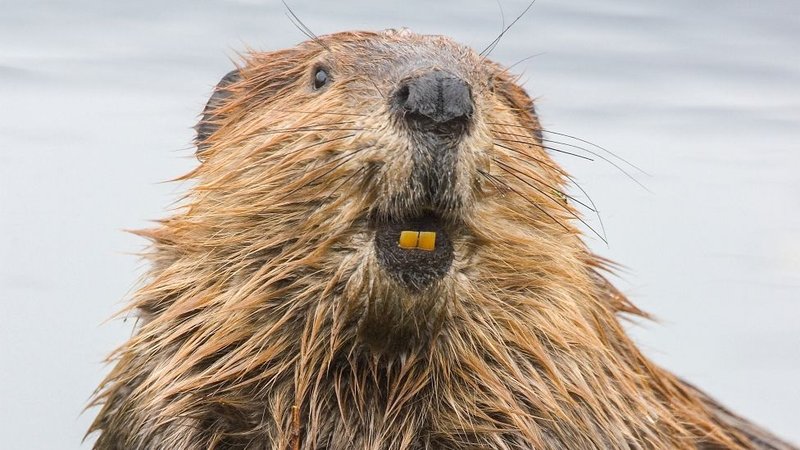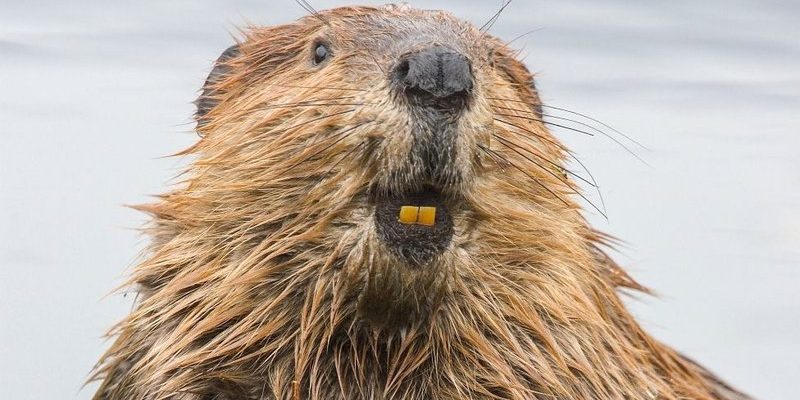
In places where winters are biting cold and temperatures drop dangerously low, beavers adapt with a mix of smart behavior and clever biological features. They are nature’s survivors, and understanding their strategies can give us insight into how life persists even in the harshest conditions. Let’s dive into the world of beavers and explore just how they manage to thrive, even when the going gets tough.
1. The Beaver’s Unique Adaptations
Beavers come equipped with a set of unique adaptations that help them face extreme weather. One of their most notable features is their thick fur. This fur isn’t just for show; it’s water-resistant and incredibly insulating. Imagine wearing a cozy coat that keeps you warm and dry even when you’re splashing around in a chilly lake—this is what beavers experience every day. Underneath the fur, they have a layer of fat that provides additional insulation.
Their tails, which might seem like just a flat paddle, are multifunctional. In winter, beavers use them to store fat reserves. When food is scarce, they can tap into these reserves. Plus, that same tail acts like a rudder when swimming, helping them navigate their watery homes with ease.
In addition, beavers have webbed feet that make them excellent swimmers. Their short, strong legs allow them to push off quickly from the water’s surface. So, when trouble arises—or there’s a need to build that next grand dam—beavers can efficiently zip through their environment.
2. Construction of Dams and Lodges
Beavers are famously known for their dam-building skills. These structures play a crucial role in their survival. By creating dams, beavers can raise the water level in ponds, which protects them from predators on land. Think of it as building a fortress around their home. This elevated water also provides a backup water source during dry seasons and ensures that they have a stable environment in which to live.
Dams are constructed using a mix of materials such as branches, mud, and stones. When constructing a dam, beavers work as a team. It’s almost like they have a silent understanding of the project at hand. Each beaver takes on a role—some gather materials, while others do the actual building. Their teamwork is impressive and showcases their social structure.
Their lodges, or homes, are built in the center of the pond created by the dam. These lodges are insulated, keeping the beavers warm during winter. Inside the lodge, they usually create a cozy chamber where they can rest unobtrusively. The entrance is underwater, which protects them from predators like wolves and bears.
3. Food Resources: What Do Beavers Eat?
Beavers are herbivores, primarily feasting on the bark, leaves, and twigs of trees and shrubs. Some of their favorites include aspen, willow, and cottonwood. When winter hits and snow covers the ground, finding fresh food can be tricky. So, beavers have a clever strategy. They often gather and store branches near the entrance of their lodge before the winter, ensuring a steady food supply.
These food caches are key to their survival. Think of it like stocking your pantry before a long winter—smart planning pays off! By nibbling on the stored branches, beavers can stay nourished and healthy even when fresh pickings are hard to come by.
You might be curious about how they chew through thick tree bark. Beavers have strong, chisel-like teeth that continuously grow, allowing them to gnaw through even the toughest wood. They usually start by stripping the bark, exposing the soft inner layers they love to munch on.
4. Coping with Extreme Cold
When winter sets in, temperatures can plummet, making survival a serious challenge. Beavers have a set of strategies to cope with the cold temperatures. Their thick fur keeps them warm, but that’s just one part of the puzzle.
Beavers enter a state called torpor during especially cold nights. This is like a temporary hibernation where their metabolism slows down, helping them conserve energy. They don’t completely hibernate, so when the weather warms up a bit, they can venture out to forage.
Moreover, the water in their ponds acts as a natural insulator, providing a warmer microclimate. With the dam built, the water’s flow decreases, preventing it from freezing solid, which allows beavers to swim underneath the ice. Think of it as having a private bubble of warmth tucked away from the harsh winds above.
5. The Importance of Beaver Ecosystems
Beavers are often referred to as “ecosystem engineers” because their work dramatically changes the environment around them. By building dams, they create wetlands that support a variety of wildlife. Many animals, like ducks and frogs, thrive in these habitats, finding food and shelter in the newly formed ponds.
Wetlands also help improve water quality by filtering pollutants and sediments. It’s like nature’s own little system for cleaning and preserving the ecosystem! These areas can mitigate flooding, as they absorb and slow down excess water during heavy rains.
You might be wondering why this matters. Healthy ecosystems are essential for biodiversity. By creating these habitats, beavers play a key role in maintaining the balance of their environment, which can help other species survive too.
6. Challenges Beavers Face
Despite their impressive adaptability, beavers still face several challenges in today’s world. Habitat loss due to urban development and deforestation makes it harder for them to find places to build their dams and lodges. When their habitats are disrupted, their populations can decline.
Additionally, beavers often come into conflict with humans. Farmers and homeowners may view dams as a nuisance, leading to efforts to remove them. This can disrupt the delicate balance of their ecosystems, making it even more challenging for beavers to survive.
Climate change also poses a threat. As temperatures shift, the habitats that beavers rely on may change, forcing them to adapt even further or risk extinction. It’s a tough world out there for a creature that has spent thousands of years perfecting the art of survival.
7. How to Help Beavers Thrive
If you’re passionate about supporting beavers and their habitats, there are several ways to get involved. You can advocate for conservation efforts in your local area, pushing for the protection of wetlands and natural habitats.
Simply educating others about the importance of beavers in ecosystems can make a difference. Many people don’t realize how vital these creatures are to the health of their environment. You could also volunteer with local wildlife organizations that work to preserve beaver habitats or support sustainable land practices.
Every little bit helps! Even if it’s just sharing your newfound knowledge about beavers with friends and family, you’re contributing to a larger cause.
In conclusion, beavers are fascinating survivors that adapt beautifully to their environments. Their ability to build, store, and cooperate allows them to thrive under harsh conditions, showcasing the resilience of nature. Understanding how these remarkable creatures live can inspire us to protect and conserve the habitats they create. After all, when we support wildlife like beavers, we’re also investing in a healthier planet for everyone.

